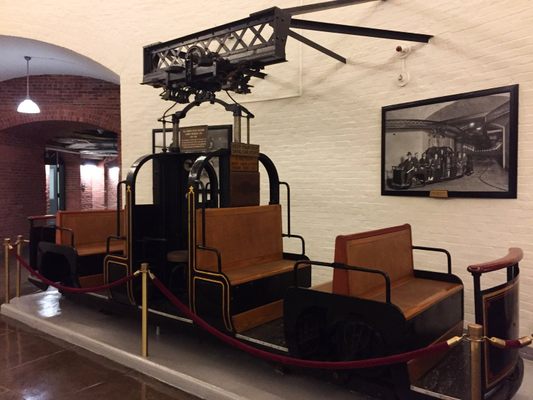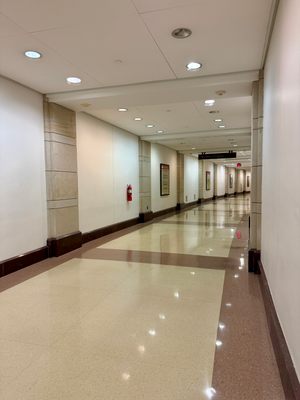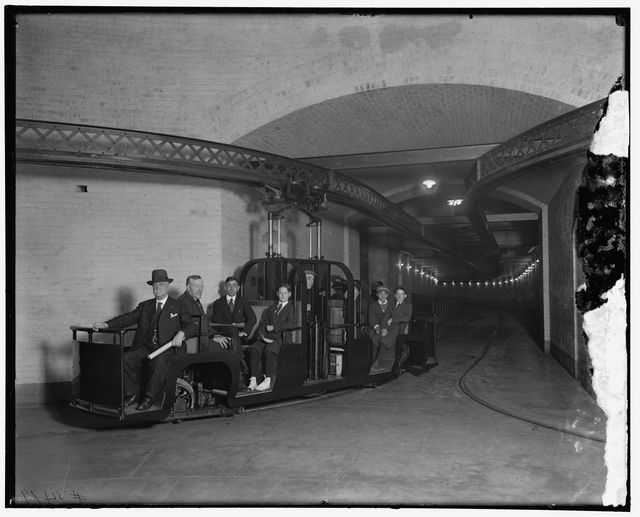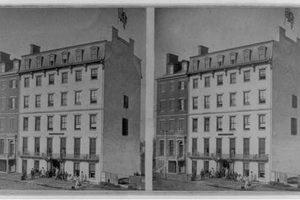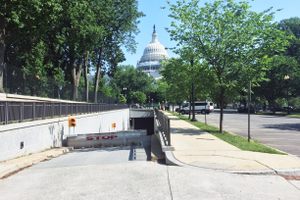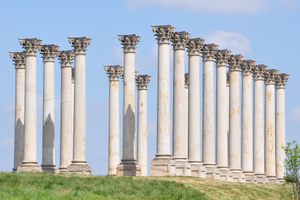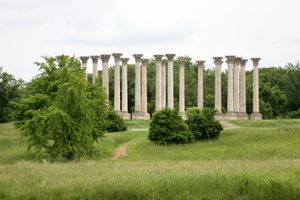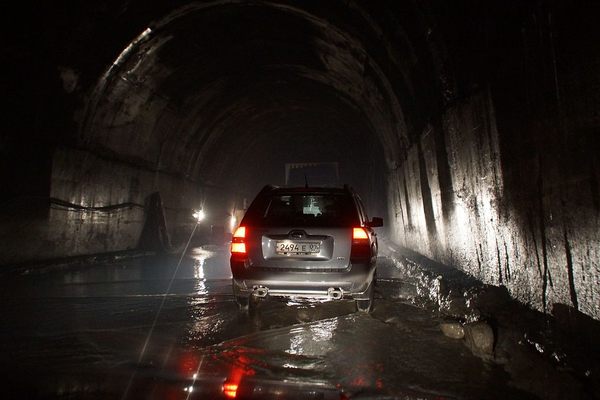About
A sprawling pedestrian tunnel system under Capitol Hill allows staffers and members of Congress to securely traverse the office buildings, Library of Congress, and Capitol building largely out of sight. But interestingly, they weren't built with privacy or security in mind, but rather because of Washington, D.C.'s weather.
The Washington Post wrote in 1907 that "The tunnels have been planned with the idea of providing an easy access to the offices, particularly in bad weather. By using them it will not be necessary for the Senators and Representatives to go out into the open at all in order to reach offices from the Capitol, or vice versa."
Originally there were only two tunnels, then in 1909 passageways were built connecting the Dirkson and Cannon buildings with the Capitol's basement.
The Senate, accustomed to greater luxury as the "upper house," explored several people-mover systems for their tunnel. The House of Representatives thought about it, but ultimately decided that their members could walk. A raised and partitioned walkway in the tunnel shows where pedestrian traffic would have been separated from the never-built House subway.
The Senate tunnel was more ambitious. Superintendent of the Capitol Elliott Woods initially wanted to install a Tunis Monorail, an enclosed car that had an aerodynamic shape similar to that of a ship. Passengers would have sat inside on swiveling wicker chairs.
They ended up going with a much more modest solution. Custom-built Studebaker electric cars were brought in to shuttle Senators back and forth along the short tunnel. Enthusiasm was high for the system when it was initially built. Contemporary newspapers were full of stories about Senators, tourists, and even the Vice President enjoying joy rides on the early automobile.
The Post amusingly wrote that "the question of a speed limit in the subways has not been raised, but there will be no chickens in the road, and as the walk for pedestrians is fenced off, there is thought to be no reason why the senators should not have a run for their money if they wish."
By 1915 the Senate had tired of the cars and was in search of a more elegant means of transportation. A unique monorail was built by the Columbia Construction Company for $9,500. The contraption was built nearby at the Washington Navy Yard. Senators could summon the trains by ringing a bell three times. According to a Post article from the time, the subway's wicker seats could accommodate "12 senators" or, rather absurdly, "36 pages."
In 1958 when the east front of the Capitol was being expanded, the government built an entirely new tunnel with a station under the Senate steps. The new tunnel had a modernized subway system, and the old car was moved to the Russell basement rotunda, where you can visit it today.
The old tunnel was repurposed for the Senate recording studio, various mechanical shops, and a fallout shelter. You can learn more about the current Senate Subway in this interesting CSPAN documentary.
Related Tags
Know Before You Go
The pedestrian tunnels are open to the public.
Community Contributors
Added By
Published
March 16, 2017




